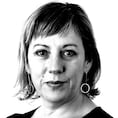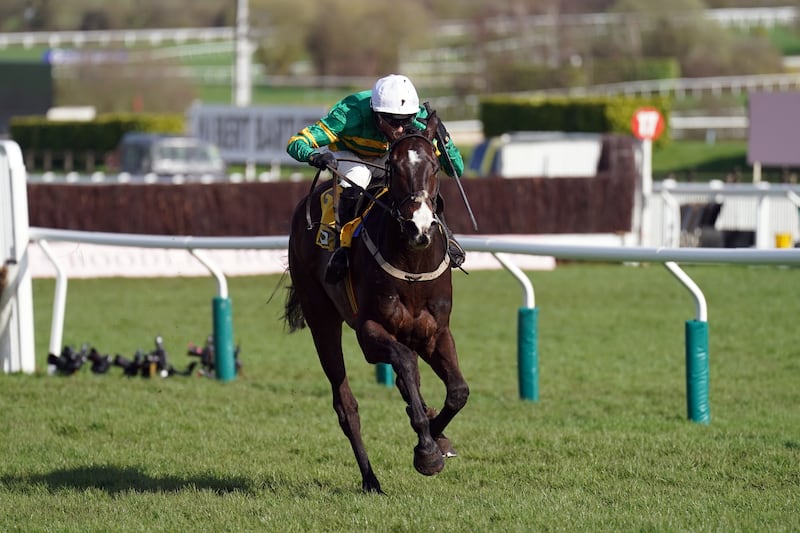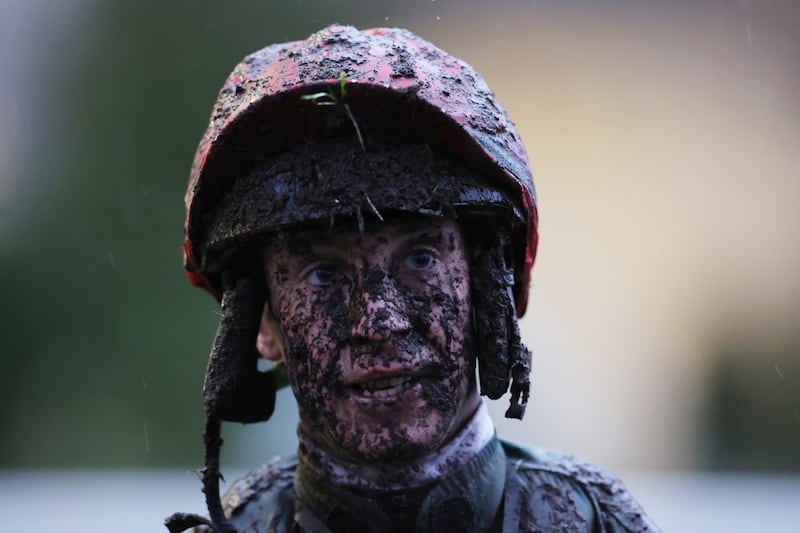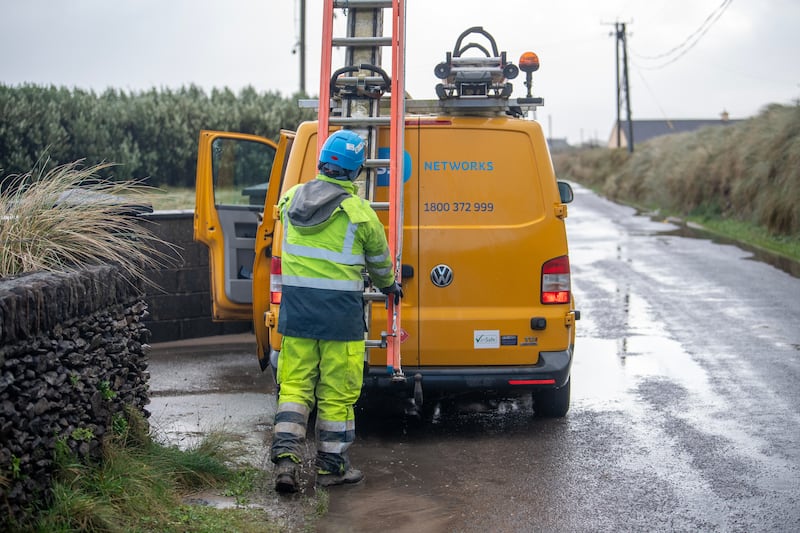How do you make it as an artist? Even assuming all the talent in the world, success is never guaranteed; and while success may mean different things, common to all is having the time and space to make work, and then the time and space for people to see it. Most agree that it is the viewer who completes the circle of their work. To make this happen, you need the right boost at the right time, and Faigh Amach, a new project from Temple Bar Gallery & Studios, aims to do just that.
Conceived by the Dublin venue’s director and curator, Clíodhna Shaffrey and Michael Hill, Faigh Amach − literally, Find Out, or Discover − is an exhibition of the work of three artists, one of whom will be offered a solo show at Southwark Park Galleries, in London. Applications were open to artists who had not yet had a significant international exhibition; Ella Bertilsson, Kathy Tynan and Emily Waszak were selected from more than 300 submissions. Together they offer an insight into the state of the next generation of art.
Ella Bertilsson
Ella Bertilsson’s films, installations and actions mingle the unexpected, the quirky and the profound. A pop-up nail bar last November, through a hole in the wall of Temple Bar Gallery, became an opportunity for honest and intimate conversations. For Faigh Amach, the Swedish-born artist, who moved to Ireland in 2013, is creating an installation that invites us to dive into our inner worlds, where chaos, clutter, desire, myth and a spot of fantasy coalesce.
For her central film, A Peanut Worm’s Dream, the starting point was the memory of a teacher who used to stand outside school, smoking. “She used to really suck in that cigarette, and there was something in it that just kept coming back to me, so I thought, Okay, I’m going to go with it.” Add in a story that she chanced upon in the news, about a woman with a parasitic worm in her brain, and you start to get the connections that ignite Bertilsson’s work.
READ MORE
In her studio, a mind map charts the links between narrative threads, inner worlds, storytelling, portals to parallel universes, the human condition, bodily sensations, everyday consumerism and collective consciousness. “My brain is like a container, and when I make work I hope it has enough layers that it can create different meanings for the viewer – that’s what I’m striving for.”
Bertilsson has been lucky, she says. “But it’s hard. I have a studio in Temple Bar Gallery for another two years, and before that I was in Rua Red. You settle in, and then you have to start shifting again.” Before that she was living in a bedsit and making work in the hallway. Now she divides her time between Callan, Co Kilkenny, and Wicklow, commuting to Dublin by train, which she describes as “like a green tunnel. Nice, but tiring as well, for sure.”
Life as an artist is precarious. Bertilsson spends her commuting time applying for things and writing exhibition proposals, which are tricky: “I don’t know, is it better to go into an imaginary project that doesn’t exist yet, or write about something you’ve already done?”
Previously working in restaurants, Bertilsson now supplements her income with screen-printing workshops at Black Church Print Studios, but she has avoided longer commitments because “if you sign up for something and then you have a project, you need time for the project.
“My dream,” she continues, “is to be in the studio working solidly. That’s what I am striving for.” Restaurant jobs gave her flexibility, and plenty of context for her work, “but having a full-time job is a distraction from that dream to come true. I think it can be pretty intense sometimes, you’re juggling many balls in the air.” Guilt comes into it: “Sometimes it feels like you have very little time for the people in your life. Then the time that you’re not spending in the studio, you’re trying to catch up on your admin, applications, emails, invoices … So you’re constantly chasing things just because you don’t know what’s around the corner.
Still,” she concludes, “It’s never ever boring. You can learn and grow so much, it’s kind of endless. That’s pretty amazing.”
Kathy Tynan

Currently based at Dún Laoghaire Baths Artist Studios, in Co Dublin, Kathy Tynan shows with the Kevin Kavanagh gallery. Her paintings draw attention to things we might otherwise miss, and to the intimacies of the everyday.
For Tynan, an artist ever alert to nuance, chance can change everything. The way the cat in her painting Crumlin Cat was sprawled “informed how I painted the hand in Bad Dreams, and that had a knock-on effect on the subsequent paintings.”
Location matters too. Moving into her Dún Laoghaire studio, but balancing it with life necessities, such as childcare pickups, “I had thought, I’ll paint the sea, and it will be really tranquil, but it has been more about stressed paintings, like painting in a rush. Some of them have worked out really well because of that urgency.”
Tynan graduated from the National College of Art and Design in 2010; she says she didn’t have the confidence to set up a painting practice at the time, “because there was so much I didn’t understand about art history, contemporary art and all the discussions that were going on.”
Taking a master’s gave her “a deep dive into art criticism and philosophy”, which, she says, helped her to put it all aside and return to painting, which she discovered to be “experience-based and not intellectual at all.
“I felt like I had permission to go back to it then, because I knew what was going on.” Now she teaches at the college, so “it has come full circle. It’s good to be mentally challenged, and it’s good to push back,” she says.
When I graduated, I wasn’t waiting for these opportunities, I was able to make my own. I don’t know if that’s possible now
— Kathy Tynan
“Having a child changed my sense of time. I’m giving parenting my all, giving art my all, but there are these moments when all the effort comes together. I’m talking to the students – I had always wanted to be a tutor – and there are times when it all synthesises into a good painting. The urgency to make something meaningful has really upped the intensity of my work.”
Nudging aside concerns that her new body of work for Faigh Amach is almost too personal, she says instead that she has “tried to push myself to be a little embarrassing, a little too revealing”.
Graduating during the last recession, Tynan hadn’t had a job to lose. “Rent was lower, and things were happening with artists. We were able to rent spaces, put on our own shows. I didn’t have a frame of reference for selling art, but it felt like there were DIY opportunities. And that’s how I got a break.”
She and a group of fellow artists rented the gallery at Pallas Projects, and also at the Hendrons building on Dominick Street. “We didn’t know a thing, and we were completely unknown, but Kevin Kavanagh came in to see one of the shows, and it piqued his interest.”
These days things are harder. Artists ask: what’s the process, and how do I get a show? “I say, ‘Apply for a show at Pallas, or there’s an open submission at Butler, and sign up to the Visual Artists Ireland bulletin.’ But when I graduated I wasn’t waiting for these opportunities. I was able to make my own. I don’t know if that’s possible now.”
Emily Waszak
Emily Waszak, who has Japanese and American heritage, divides her time between Donegal and Dublin, where she has a studio at Fire Station. Originally working in industrial weaving, Waszak came to making art on the death of her husband in the first year of the Covid pandemic.
Drawing on the traditions of Japanese ceramics, and weaving, her work explores memory, mourning, ritual and the power of tactile making. Preferring to see Faigh Amach as an “opportunity to work with two other brilliant artists”, rather than as a prize, she says she has found the art world in Ireland tough but supportive. “There can be a feeling of competition, because you’re constantly being judged as an artist, and there’s rejection. It can be quite intense, but when you find your people it is a lovely and generous community.”
As artists are priced out of Dublin, Waszak points to the need for more development of our rural arts infrastructure. “The Letterkenny Regional Cultural Centre is an amazing support, but Donegal doesn’t have a lot of workspaces for artists.”
Quietly thoughtful, she is alert to the different energies of rural and urban life. “I need quiet. I need my own head. That’s not just studio time, it’s being in the landscape. But once I’m in the testing phase I need people, and to have other artists around.”
While many artists live rurally, cities are also the main places where careers happen. “To be able to go to openings, performances, talks, and have conversations, in Dublin, and outside of Ireland, I need both things.”
Currently taking an Irish-language class, Waszak is alert to the connections in folklores across the globe, describing characters that occur in both Japanese and Irish myth. “I’m not reproducing culture,” she says of her work. “I’m taking resonances from what I understand about the world through culture.”
Her explorations have led to an understanding of the ways in which many of the tools to deal with the things that afflict us are already here.
For her, a pivotal point was not being able to go to the funeral of her husband during Covid, which she describes as horrific. “Partly it was so horrific because rituals are what ground us in the world.” This led to explorations of what she terms ancestral technology. “These are the tools for being in the world that have been left by our ancestors through generations. Some are objects, and some are gestures, acts and ritual. There rituals continue to be passed down as a way of helping ourselves, and the next generations, to deal with our larger, existential understandings.”
Objects matter too. “We imbue them with meaning, then we receive that meaning back, like looking into a mirror. We say, ‘Wow, this is amazing,’ but it is there because we put it there. An object has a power to hold a gesture, to hold meaning. When you’re isolated or grieving – and I think everyone is feeling a bit isolated under late-stage capitalism – you just need something. Sometimes it is easier to begin with yourself in a room, maybe with an object. Then work your way out to people again.”
Faigh Amach is at Temple Bar Gallery & Studios until Sunday, September 21st. The artist to exhibit in London will be selected by Southwark Park Galleries’ director and deputy director, Judith Carlton and Charlotte Baker, and will be announced in October





















